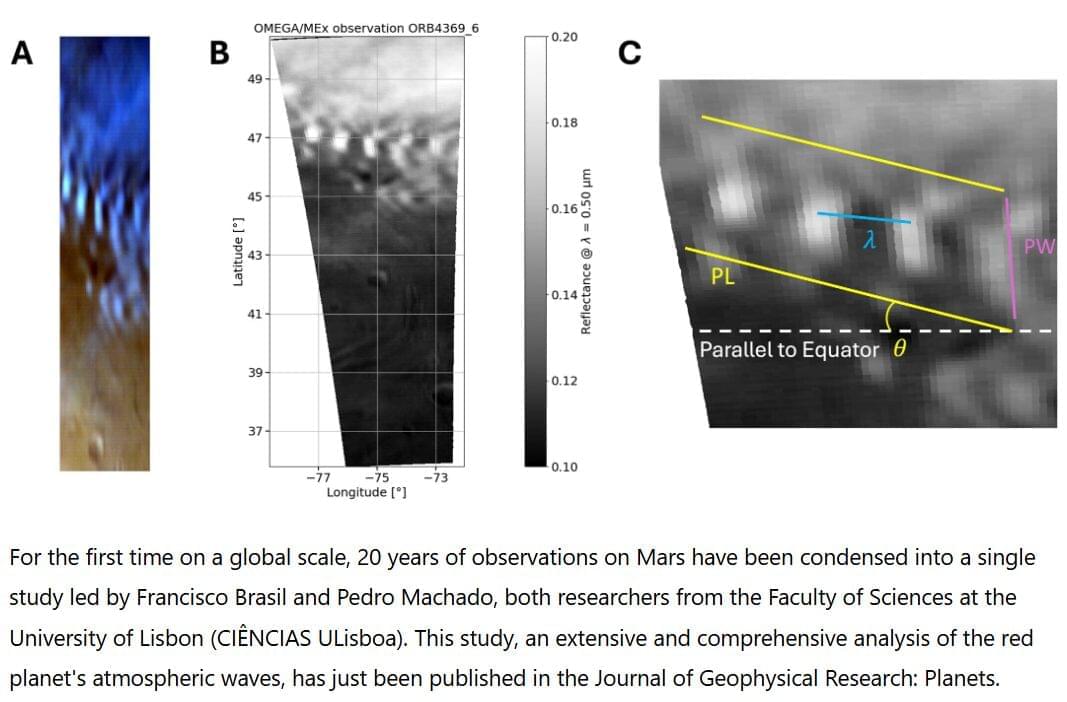Over 100 red sprites were captured above the Himalayas in 2022. A study linked them to strong lightning strikes in a large thunderstorm system and introduced a new timing method for analysis. Have you ever heard of or seen red lightning? These are not animated characters, but real atmospheric ph
Category: climatology – Page 15


Scientists find way to rewire the brain
The first genetically engineered synapses have been implanted in a mammal’s brain. Chemical brain signals have been bypassed in the brains of mice and replaced with electrical signals, changing their behaviour in incredible ways. Not only did they become more sociable, they were also less anxious and exhibited fewer OCD-like symptoms. This work has sparked hope that one day we could use this technology to help humans with mental health conditions. But would you want someone making permanent edits to your brain?
For the first time, climate scientists can now link specific fossil fuel companies to climate-related economic damages in particular places. A new method has been developed that can show the exact impact these companies are having on our environment — which the world’s top five emitters linked to trillions of dollars of economic losses. Find out how scientists have managed to piece this together — and whether these companies are about to face massive lawsuits.
As we reflect on the death of Pope Francis, we explore his legacy on scientific issues and his transformative stance on climate change. As the spiritual leader of 1.4 billion Catholics, he became an influential figure in advocating for better care to be taken of our planet. Will his legacy continue with the next Pope?
Chapters:
00:00 Intro.
00:28 First brain engineering in a mammal.
10:57 Landmark in fossil fuel lawsuits.
19:33 Climate legacy of Pope Francis.
Hosted by Rowan Hooper and Penny Sarchet, with guests Alexandra Thompson, James Dinneen, William Schafer, Chris Callahan, Justin Mankin and Miles Pattenden.
–
Learn more ➤ https://www.newscientist.com/podcasts.
Subscribe ➤ https://bit.ly/NSYTSUBS

GOES‑19 Goes Live: Tracking Hurricanes, Lightning, and Solar Storms in Stunning Detail
GOES-19 has taken over as NOAA’s primary geostationary eye in the Western Hemisphere, joining GOES‑18 to deliver unprecedented detail on global weather. It tracks hurricanes, atmospheric rivers, wildfires and more with high‑resolution imagery and lightning mapping. Its CCOR‑1 coronagraph keeps wa
Jupiter’s enigmatic weather explained by confirmed ‘mushball’ phenomenon
Imagine a Slushee composed of ammonia and water encased in a hard shell of water ice. Now picture these ice-encrusted slushballs, dubbed “mushballs,” raining down like hailstones during a thunderstorm, illuminated by intense flashes of lightning.
Planetary scientists at the University of California, Berkeley, now say that hailstorms of mushballs accompanied by fierce lightning actually exist on Jupiter. In fact, mushball hailstorms may occur on all gaseous planets in the galaxy, including our solar system’s other giant planets, Saturn, Uranus and Neptune.
The idea of mushballs was initially put forth in 2020 to explain nonuniformities in the distribution of ammonia gas in Jupiter’s upper atmosphere that were detected both by NASA’s Juno mission and by radio telescopes on Earth.

‘Mars and Earth are even more different than we thought’: Condensing 20 years of atmospheric wave observations
For the first time on a global scale, 20 years of observations on Mars have been condensed into a single study led by Francisco Brasil and Pedro Machado, both researchers from the Faculty of Sciences at the University of Lisbon (CIÊNCIAS ULisboa). This study, an extensive and comprehensive analysis of the red planet’s atmospheric waves, has just been published in the Journal of Geophysical Research: Planets.
Atmospheric waves are “wave-shaped disturbances that travel through the planet’s atmosphere, much like waves moving across the surface of water,” explains the study “Atmospheric Gravity Waves in Mars’ Lower Atmosphere: Nadir Observations From OMEGA/Mars Express Data.”
The researchers focused on this energy, which has a significant impact on the planet’s climate. The data, collected by the Observatoire pour la Minéralogie, l’Eau, les Glaces et l’Activité (OMEGA) from the European Mars Express space mission, served as the foundation for this ambitious analysis.

Increasing Potential for Disruptions from Likely Volcanic Eruption in US State of Alaska
Volcanic activity at Mount Spurr in Alaska is predicted to culminate in an explosive eruption in the coming months, potentially resulting in ashfall and disruptions to aviation operations in the greater Anchorage area. The stratovolcano, located in the Aleutian volcanic arc, lies around 129 km (80 miles) west of Anchorage on the western side of the Cook Inlet.
An uptick in low-level seismic activity and snow and ice melt has been occurring at the volcano since last year, indicating magmatic movements taking place under the surface; the alert level at the volcano was raised to yellow (the second lowest-level on a four-tier scale) in October 2024. Volcanic gas emissions have also been recorded, and the latest assessments indicate this activity will more likely end in an eruptive episode, rather than simmer down as it did in 2004–2006.
